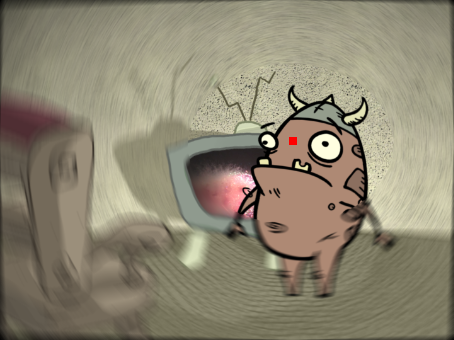T-COMP2-003-006
The Blur - Radial Zoom effect creates blurs around a centre point, simulating the look of a zooming or rotating camera. You can use a matte to isolate the area of the image from which you want the effect to radiate from. For example, in the illustration below, a circular matte was created to mask the eyeball and a Negate effect was applied so the blur is outside the matte. Then the centre point was positioned on the character's iris, which is the centre of the matte.
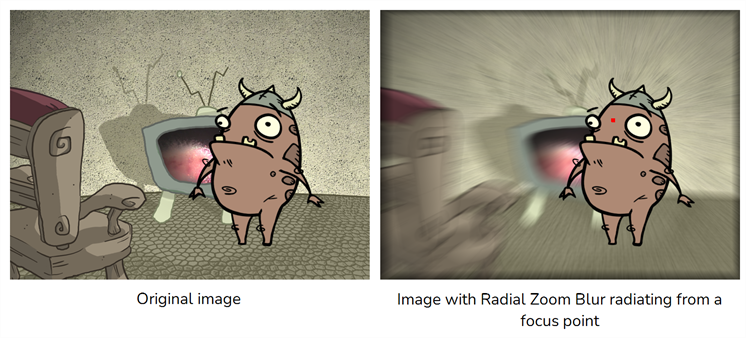
For detailed video tutorials and sample scenes by Adam Phillips, see:
https://www.toonboom.com/resources/video-tutorials/chapter/adam-phillips-harmony-effects
- In the toolbar at the bottom of the Camera view, click on Render View
.
- Do one of the following:
- From the Node Library view, drag a Blur-Radial-Zoom node to the Node view.
- Right-click in the Node View and select Insert > Filter > Blur > Blur-Radial-Zoom.
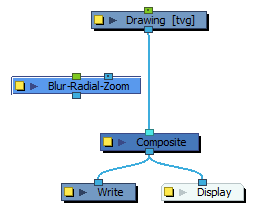
-
Click on the port connecting the composite to the drawing node, and drag the cable to the right-most (Image) input port of the Blur-Radial-Zoom node.
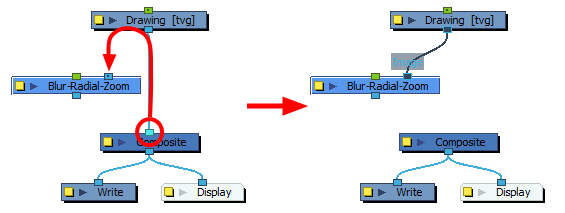
-
Click on the output port of the Blur-Radial-Zoom node and drag it to the composite to connect the effect to the composite.
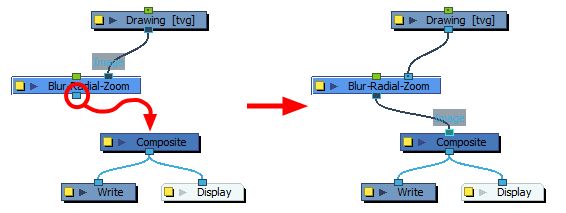
-
On the Blue Radial Zoom node, click on the Layer Properties
 icon to open the node's Layer Properties dialog.
icon to open the node's Layer Properties dialog. 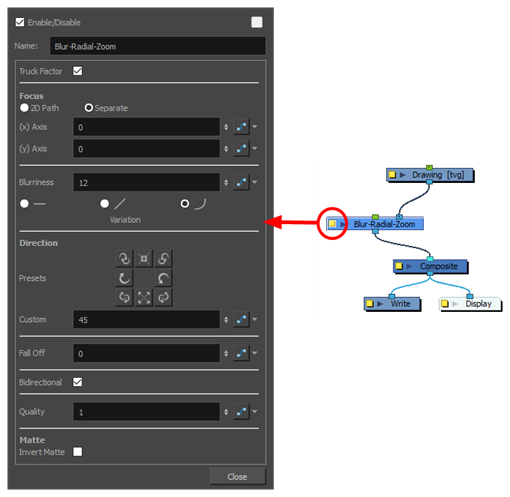
-
In the Layer Properties dialog, increase the Blurriness value.
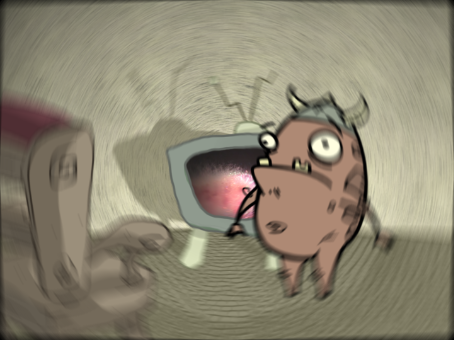
- In the Direction section, click on any of the direction presets to modify the direction of the blur. Each preset button has an icon that represents the results of the preset.
- In the Node or Timeline view, select the Blur-Radial-Zoom node.
-
In the Camera view toolbar, click on the Show Control
.
A red dot appears in the middle of the Camera view. This dot determines the focus (centre)of the radial-zoom blur effect.
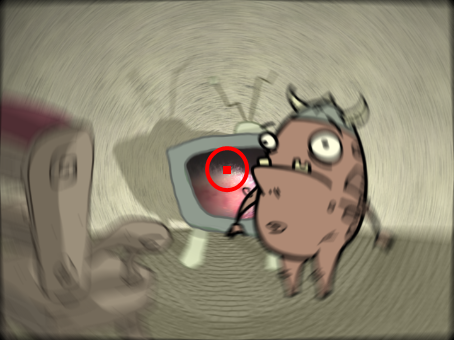
- In the Tools toolbar, select the Transform
tool.
-
Click and drag on the red dot to position it where you want the focus of the radial-zoom blur effect to be.

- In the toolbar above the layer list in Timeline view, click on the Add Layer
button and select Drawing.
-
Give your new drawing layer a relevant name for a matte layer, such as "Matte-Drawing", then click on Add and Close.

-
In the new matte drawing layer, draw the shape of the area that you want to isolate from the radial-zoom blur, and fill it.
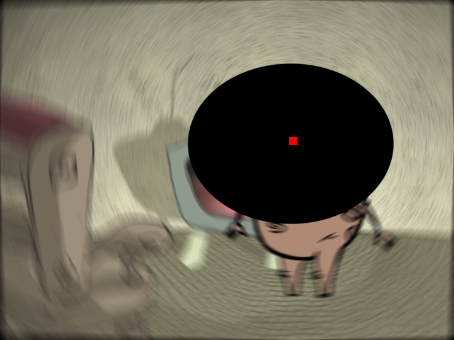
-
In the Node view, click on the port connecting the composite to the matte drawing layer and drag it to the left edge of the Blur-Radial-Zoom blur. A matte input port will appear when you bring a cable near the left edge.

- Click on the Layer Properties
 button of the Blur-Radial-Zoom node to open its Layer Properties dialog.
button of the Blur-Radial-Zoom node to open its Layer Properties dialog. -
Check the Invert Matte check box at the bottom of the layer properties dialog.
Everything outside of the matte drawing is now affected by the radial-zoom blur.
